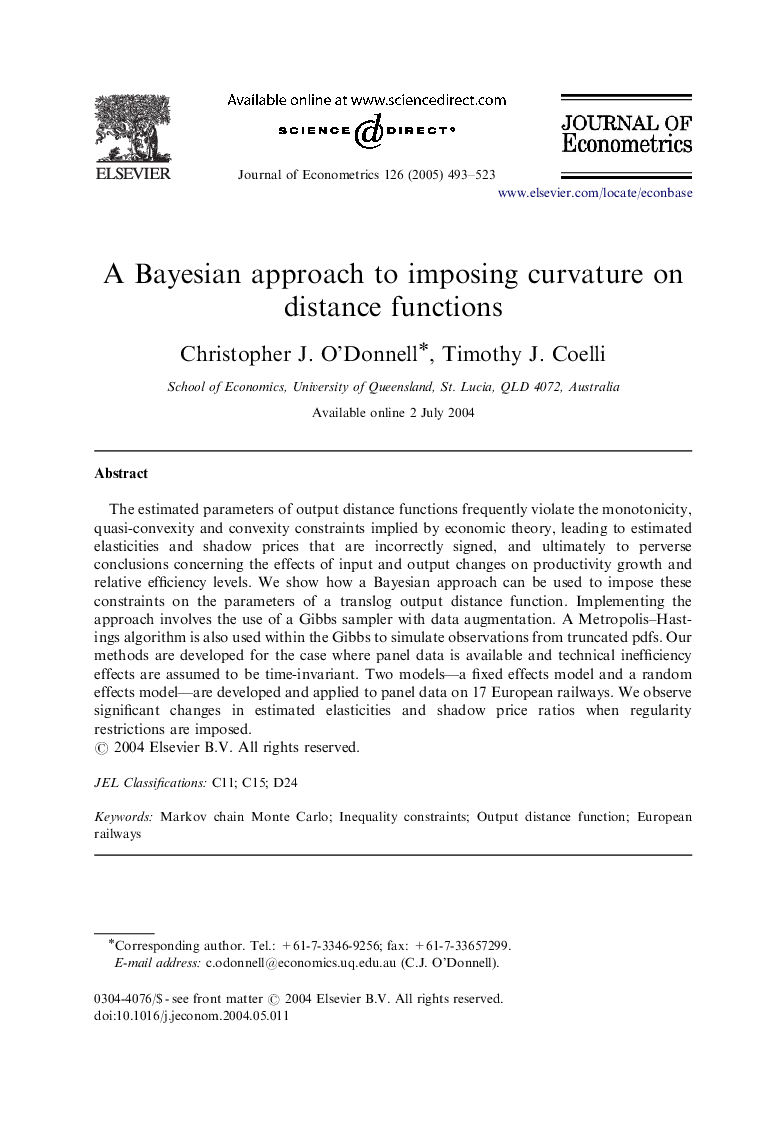| Article ID | Journal | Published Year | Pages | File Type |
|---|---|---|---|---|
| 9555339 | Journal of Econometrics | 2005 | 31 Pages |
Abstract
The estimated parameters of output distance functions frequently violate the monotonicity, quasi-convexity and convexity constraints implied by economic theory, leading to estimated elasticities and shadow prices that are incorrectly signed, and ultimately to perverse conclusions concerning the effects of input and output changes on productivity growth and relative efficiency levels. We show how a Bayesian approach can be used to impose these constraints on the parameters of a translog output distance function. Implementing the approach involves the use of a Gibbs sampler with data augmentation. A Metropolis-Hastings algorithm is also used within the Gibbs to simulate observations from truncated pdfs. Our methods are developed for the case where panel data is available and technical inefficiency effects are assumed to be time-invariant. Two models-a fixed effects model and a random effects model-are developed and applied to panel data on 17 European railways. We observe significant changes in estimated elasticities and shadow price ratios when regularity restrictions are imposed.
Related Topics
Physical Sciences and Engineering
Mathematics
Statistics and Probability
Authors
Christopher J. O'Donnell, Timothy J. Coelli,
